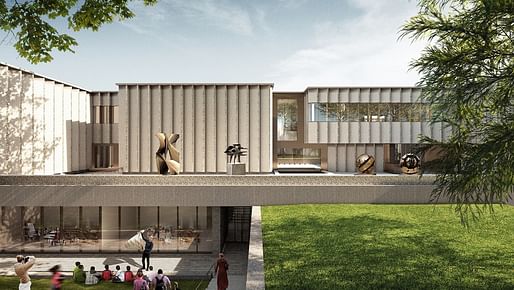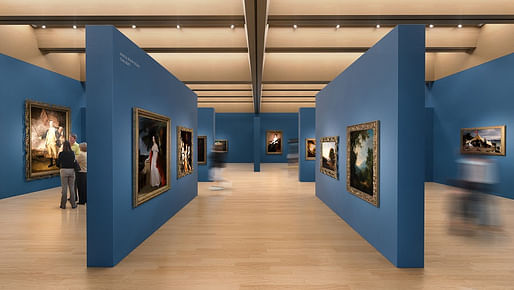
Construction has commenced on a new home for the Princeton University Art Museum. Designed by Adjaye Associates, with Cooper Robertson serving as executive architects, the new scheme will be built on the site of the former museum building on the Princeton campus, doubling the museum’s area to 144,000 square feet.

The three-story art museum will be comprised internally of nine pavilions, which seek to “break down the scale of the complex into more intimate modules and allows for deeply varied gallery experiences.” The pavilions are linked by two “art walks” — thoroughfares that flow through the building as a circulatory spine.
The building’s nine pavilions are paired by four public zones, comprising gathering spaces, event and education spaces, and a café, inviting the public inside while controlling access to the galleries on the upper floors. Four of the nine gallery pavilions feature mechanically controlled daylighting and 18-foot ceilings. Meanwhile, other galleries form more intimate experiences for the display of light-sensitive works such as the museum’s renowned photography and Chinese paintings.
At ground level, an education center houses a series of facilities for public engagement, including a Grand Hall seating 250 people, a lecture hall seating 60 people, two seminar rooms, and two creativity labs. Above, outdoor terraces will accommodate up to 2,000 guests while a rooftop terrace adjoining the café will open to the university and local community.

The building’s exterior is defined by rough and polished stone surfaces echoing the campus’ surroundings. The façade also contains signature bronze details, alternating solid elements with more transparent features which “speak both to the present moment and to the historical Princeton context.”

A landscape design for the site has been designed by James Corner Field Operations in collaboration with Adjaye Associates, which sees the retention of specimen trees such as a 100-year-old dawn redwood. The team has committed to repurposing any felled trees as furniture or household furnishings in collaboration with regional artisans, to be sold through the Museum Store.
Demolition of the existing buildings began in the summer of 2021, with construction scheduled to conclude in 2024. According to the design team, at least 85% of the material being removed from the site will be recycled or reused.
News of the scheme follows David Adjaye’s recent appointment for the design of the Barbados Heritage District dedicated to memorializing slavery. The firm has also recently revealed designs for a major new healthcare infrastructure project in Ghana.
No Comments
Block this user
Are you sure you want to block this user and hide all related comments throughout the site?
Archinect
This is your first comment on Archinect. Your comment will be visible once approved.